45 Best College Graduation Rates for 2024
Updated: November 6, 2023
By: Tyson Schritter & Colleges of Distinction Staff
Jump to: 20 Best Graduation Rate Colleges | 15 Best Graduation Rate Colleges of Distinction | 10 Best Graduation Rate Public Colleges
Graduation rates are one of the most popular statistics used to rank schools. After all, the whole point of going to college is to graduate, right? While college is so much more than the diploma with your name on it, graduation should be the ultimate goal. Thanks to the 1990 Student Right to Know Act, colleges and universities are required to report the percent of students who graduate within 150% of the normal time for completion of or graduation from the program, which is typically 4 to 6 years.
Graduation rates can be good indicators for the quality of a school, but a low rate doesn’t necessarily equate to a lesser quality school. There are numerous factors that contribute to a less-than-perfect rate, and not all of them should deter you from applying. Keep reading to learn more about graduation rates and see which schools report the highest numbers.
How are graduation rates calculated?
A college’s graduation rate is the percentage of a school’s first-time, first-year undergraduate students who complete their program within 150% of the published time for the program. For example, for a 4-year degree program, entering students who complete within 6 years are counted as graduates.
Average national graduation rates:
According to data collected by the U.S. Department of Education’s National Center for Education Statistics in 2020, the overall 6-year graduation rate for first-time, full-time undergraduate students who began seeking a bachelor’s degree at 4-year, degree-granting institutions in fall 2014 was 64 percent.
To see a college’s strict 4-year rate, go to NCES College Navigator tool and search for any school. Click the drop down tab labeled “Retention and Graduation Rates,” You’ll find a graph like the one below that illustrates the institution’s 4-year, 6-year, and 8-year rates. For the following examples, we used data from Harvard University.

What factors affect graduation rates?
Transfer students: Graduation rates do not include students who have transferred in or out of a university. Institutions are not required by the “Right to Know Act” to report their transfer rates. Thus, there is not enough data to accurately account for students who transfer to and ultimately graduate from another institution. So, a school with a lower rate might also serve a significant transfer student population. The table below does not have a transfer-out rate because Harvard University elected not to provide that information.

Double majors and minors can also affect rates. Although there is less quantitative data to reflect this, many schools report that students who chose to double major or minor do not graduate within the 4 to 6 year window. Those pesky over-achievers can skew the data in a small way.
Ivy League Graduation Rates
It’s no secret that Ivy League schools are great colleges. These institutions are leaders in almost every area: acceptance rates, retention rates, endowment size, etc. And graduation rates are no different. Elite colleges—such as our example school, Harvard—boast some of the highest rates in the country. In fact, Harvard takes the number-one spot with a whopping 97% graduation rate. Now, you might be wondering how nearly every student is graduating from Harvard. They must have the secret sauce, right? The perfect formula for success? Maybe. World-renowned professors and a $53.2 billion endowment certainly helps, but there could be another side to this coin.
Former Business Insider Journalist Joe Weisenthal shared a critical take on Harvard’s glowing graduation rates in his article titled “The REAL Reason Harvard Has Awesome Graduation Rates.” He wrote:
But let’s be honest. You know why Harvard has a matriculation graduation rate around 80%, right? It’s not because they have programs to hold their students’ hands through graduation. The secret: be uber-selective in who you accept, ensuring that everyone who enters is a type-A, overachiever. That’s it.
While this was published 14 years ago, the only thing that has changed is the numbers. Harvard’s graduation rate has risen to an impressive 97% while the acceptance rate has plummeted; in 2009, Harvard’s acceptance rate was 9.1%. In 2022, it fell by more than half of that to 4%. Yikes. All of this begs the question: are these schools really that much better at educating students than other schools? Or are they merely benefitting from being extremely selective about the type of student they are accepting?
10 Best Graduation Rate Colleges
*4 year graduation rates used
1. University of Chicago
Chicago, IL
Graduation Rate: 91%
The University of Chicago, founded in 1890, is celebrated for its commitment to intellectual rigor and inquiry. Located in the vibrant city of Chicago, it has a strong tradition of fostering critical thinking and academic excellence across a wide range of disciplines, making it a prominent institution in higher education.
| Acceptance Rate 6% | Net Price $33,727 | SAT Range 1510-1580 |
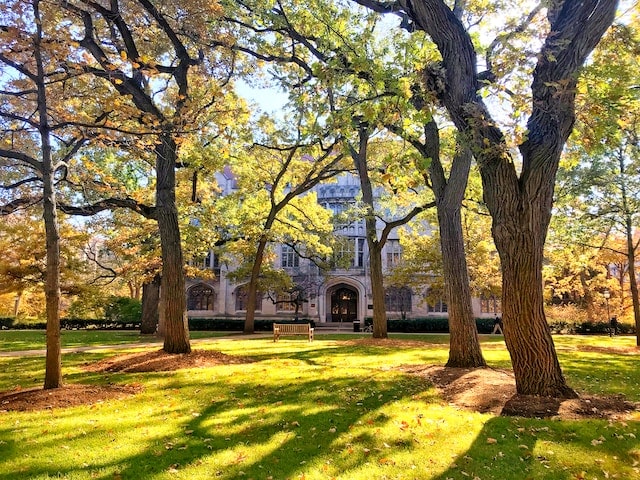
2. Washington and Lee University
See Profile>
Lexington, VA
Graduation Rate: 91%
Washington and Lee University is a prestigious small, private liberal arts university located in Lexington, Virginia. It is nestled in the scenic mountains of western Virginia and is nationally ranked for its academic excellence and strong liberal arts programs.
The university is well-regarded for its academic quality and has a history dating back to 1749, making it one of the oldest institutions in the United States. It offers a wide range of undergraduate programs and has a reputation for its rigorous academics and close-knit community.
| Acceptance Rate 19% | Net Price $26,063 | SAT Range 1410-1530 |
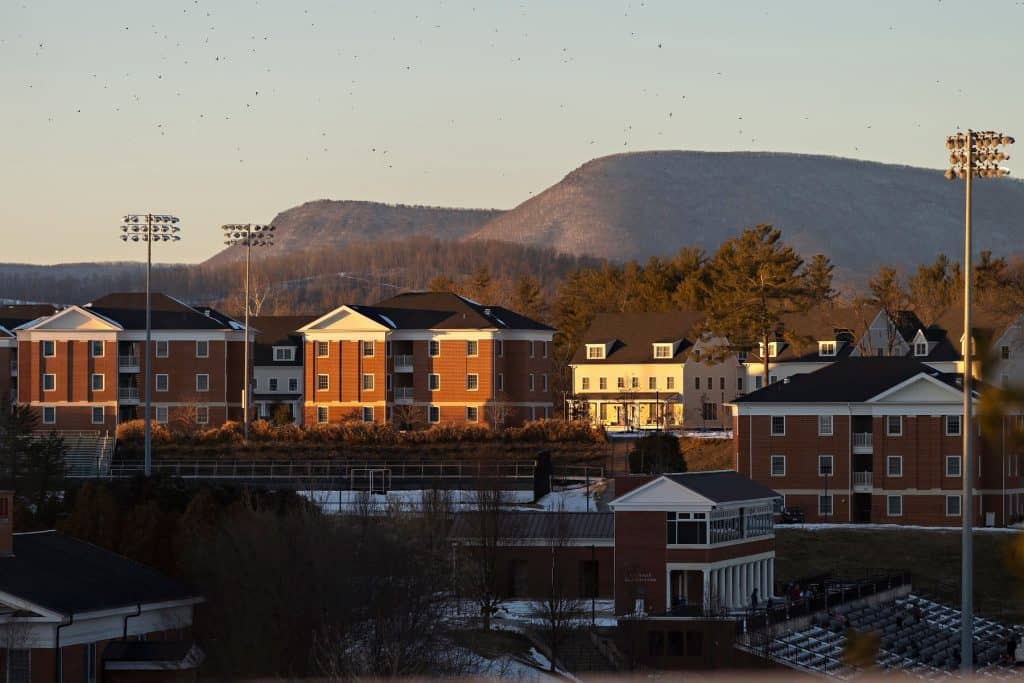
3. University of Notre Dame
Notre Dame, IN
Graduation Rate: 90%
The University of Notre Dame du Lac, known simply as Notre Dame or ND, is a private Catholic research university in Notre Dame, Indiana, outside the city of South Bend. The university graduates 90% of students in 4 years.
| Acceptance Rate 15% | Net Price $30,513 | SAT Range 1410-1550 |
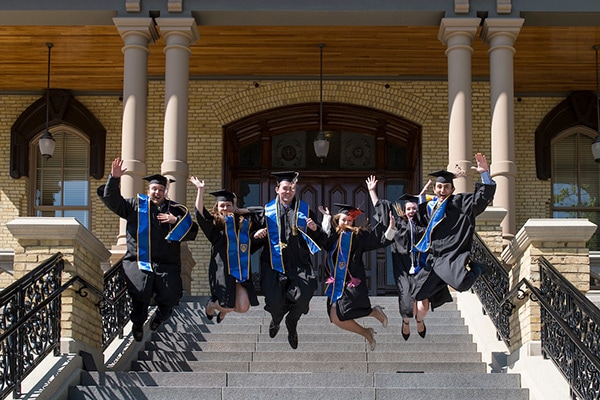
4. Georgetown University
Washington, DC
Graduation Rate: 90%
Georgetown University is situated in Washington, D.C., which is known for being the epicenter of global politics, providing a unique educational environment.
| Acceptance Rate 12% | Net Price $23,049 | SAT Range 1410-1550 |
5. College of the Holy Cross
See Profile>
Worcester, MA
Graduation Rate: 90%
College of the Holy Cross is a selective, liberal arts institution with a focus on discovery. Students are encouraged to explore their talents and intellectual capabilities, while applying their skills to improve the local and global communities.
| Acceptance Rate 43% | Net Price $29,198 | SAT Range 1240-1420 |
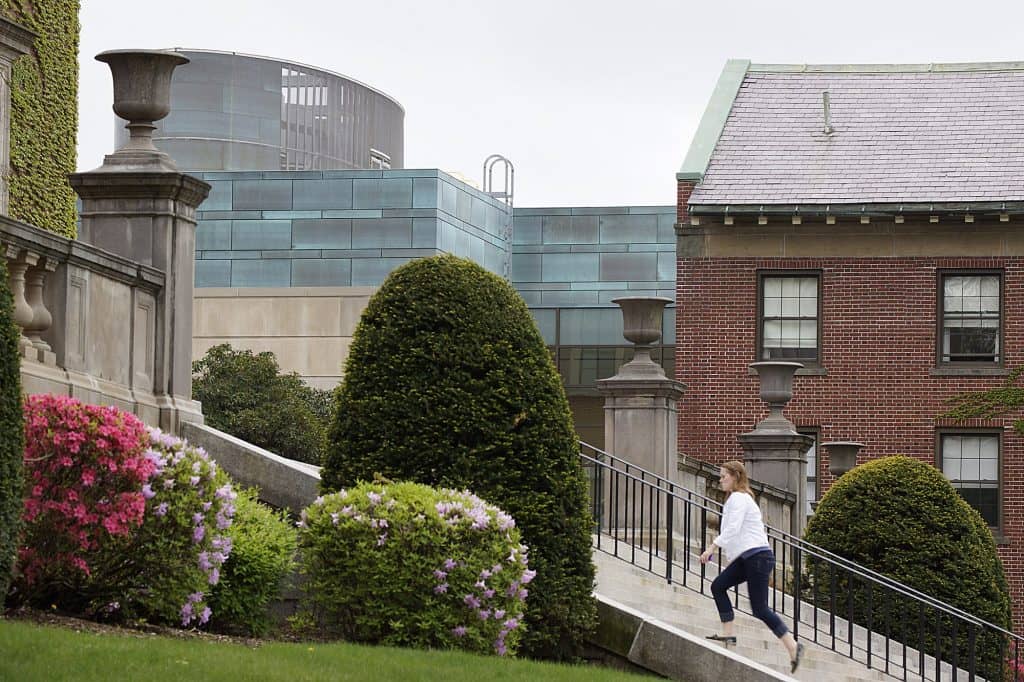
6. Princeton University
Princeton, NJ
Graduation Rate: 90%
Princeton University is a private Ivy League research university in Princeton, New Jersey. Princeton’s undergraduate population is less than 8,000; only six percent of applicants are accepted.
| Acceptance Rate 4% | Net Price $20,908 | SAT Range 1460-1570 |
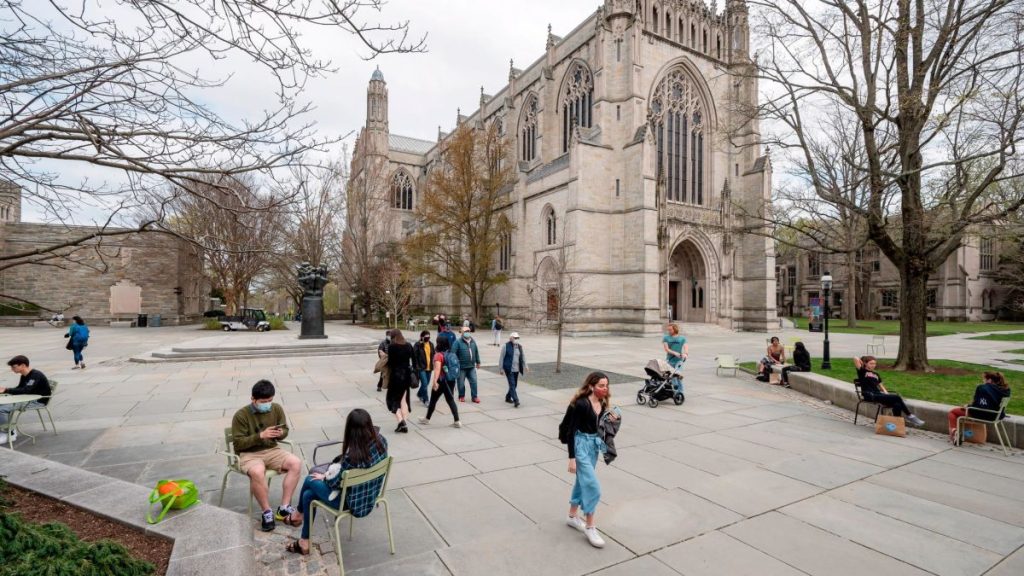
7. Duke University
Durham, NC
Graduation Rate: 89%
Duke University is a private research university in Durham, North Carolina. Duke’s suburban campus is home to 16,172 students. Duke graduates nearly 96% of students.
| Acceptance Rate 6% | Net Price $27,297 | SAT Range 1468-1558 |

8. University of Pennsylvania
Philadelphia, PA
Graduation Rate: 89%
The University of Pennsylvania is a private Ivy League research university in Philadelphia, Pennsylvania.
| Acceptance Rate 6% | Net Price $33,727 | SAT Range 1510-1580 |
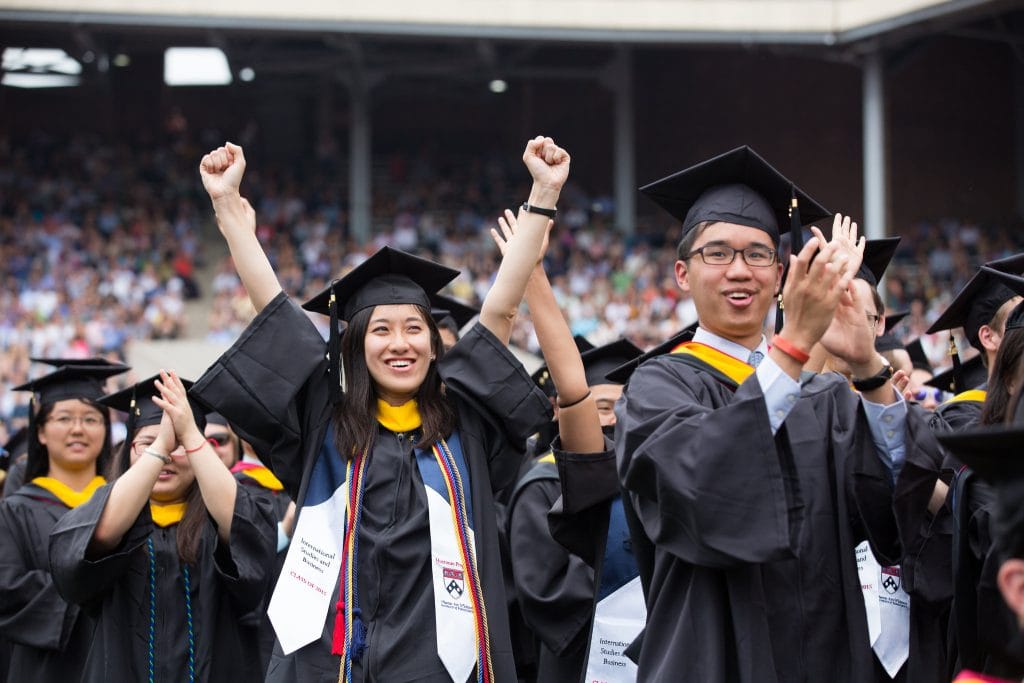
9. University of Virginia
See Profile>
Charlottesville, VA
Graduation Rate: 89%
Discover the historic charm and academic excellence of the University of Virginia, one of the country’s premier public universities. Founded by Thomas Jefferson in 1819, the UVA campus boasts stunning architecture and beautiful gardens that provide the perfect setting for a rigorous and rewarding educational experience. With a commitment to interdisciplinary learning, UVA offers more than 100 majors across 12 schools, including renowned programs in engineering, business, and law. The university’s Honor Code sets the standard for academic integrity and creates a culture of trust and respect among students and faculty.
| Acceptance Rate 21% | Net Price $20,401 | SAT Range 1380-1500 |
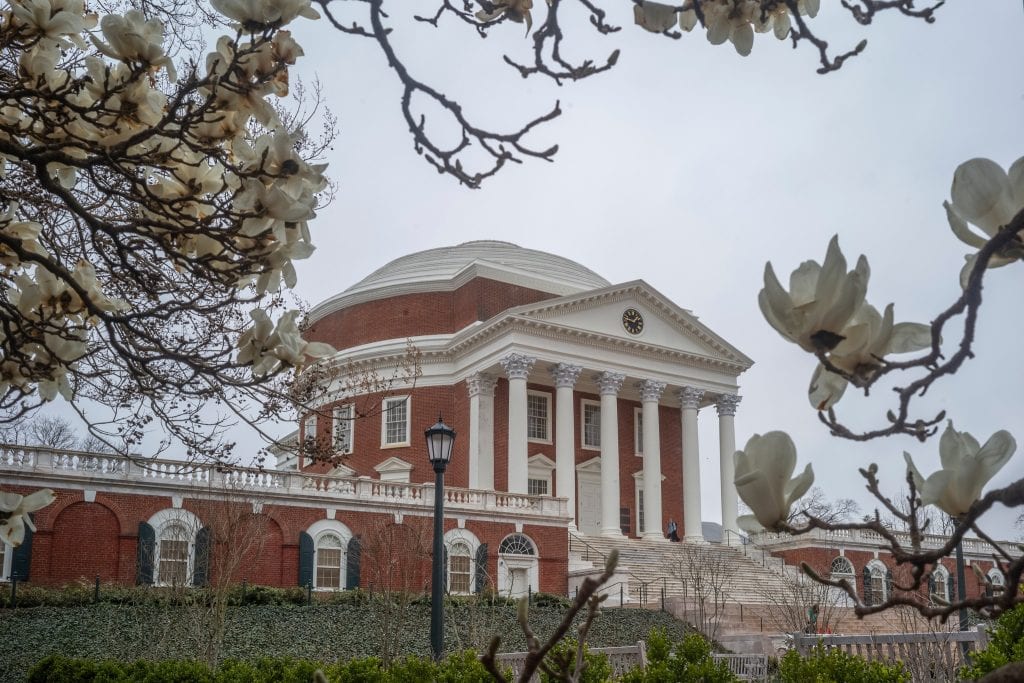
10. Tufts University
Medford, MA
Graduation Rate: 89%
Tufts University is a world-class private research university located in Greater Boston, Massachusetts.
| Acceptance Rate 11% | Net Price $31,630 | SAT Range 1440-1550 |
The Rest of the Top 20 Graduation Rate Colleges
| # | School | More Info | Graduation Rate | Location | Acceptance Rate | Net Price | SAT Range |
|---|---|---|---|---|---|---|---|
| 11 | Bowdoin College | 89% | Brunswick, ME | 9% | $26,727 | Test optional | |
| 12 | Vanderbilt University | 89% | Nashville, TN | 7% | $27,553 | 1480-1570 | |
| 13 | Columbia University in the City of New York | 88% | New York, NY | 4% | $12,411 | 1470-1570 | |
| 14 | Massachusetts Institute of Technology | 88% | Cambridge, MA | 4% | $30,958 | 1530-1580 | |
| 15 | Harvey Mudd College | 88% | Claremont, CA | 10% | $33,838 | 1480-1560 | |
| 16 | Yale University | 88% | New Haven, CT | 5% | $20,605 | 1480-1580 | |
| 17 | Cornell University | 88% | Ithaca, NY | 9% | $24,262 | 1450-1560 | |
| 18 | Villanova University | Profile> | 88% | Villanova, PA | 25% | $33,123 | 1350-1490 |
| 19 | Boston College | Profile> | 88% | Chestnut Hill, MA | 19% | $30,159 | 1420-1530 |
| 20 | Bates College | 88% | Lewiston, ME | 17% | $26,231 | Test optional |
15 Best Colleges of Distinction Graduation Rates
These hyper-elite colleges are not the only way to get a great college education. We have picked another 15 amazing schools that have strong graduation rates and also pass through our Four Distinctions guidelines. Take a look for yourself and see if there is one or two worth adding to your shortlist!
| School | More Info | Graduation Rate | Location | Acceptance Rate | Net Price | SAT Range |
|---|---|---|---|---|---|---|
| Bryant University | Profile> | 80% | Smithfield, RI | 74% | $40,310 | 1120-1300 |
| Stonehill College | Profile> | 80% | Easton, MA | 72% | $31,467 | Test free |
| Quinnipiac University | Profile> | 77% | Hamden, CT | 88% | $38,244 | Test optional |
| Saint Norbert College | Profile> | 75% | De Pere, WI | 85% | $27,107 | 1100-1280 |
| Gustavus Adolphus College | Profile> | 74% | Saint Peter, MN | 73% | $27,657 | Test optional |
| Washington College | Profile> | 74% | Chestertown, MD | 70% | $22,088 | Test optional |
| Messiah University | Profile> | 73% | Mechanicsburg, PA | 77% | $23,895 | 1100-1340 |
| Washington & Jefferson College | Profile> | 71% | Washington, PA | 84% | $27,101 | 1050-1300 |
| Elizabethtown College | Profile> | 70% | Elizabethtown, PA | 79% | $26,534 | 1070-1280 |
| The College of Wooster | Profile> | 70% | Wooster, OH | 61% | $24,934 | 1220-1430 |
| Sacred Heart University | Profile> | 69% | Fairfield, CT | 66% | $43,907 | Test optional |
| Assumption University | Profile> | 69% | Worcester, MA | 86% | $26,513 | Test optional |
| Hobart William Smith Colleges | Profile> | 68% | Geneva, NY | 67% | $34,239 | 1170-1370 |
| Westminster College | Profile> | 67% | New Wilmington, PA | 82% | $20,258 | 1040-1258 |
| University of Puget Sound | Profile> | 67% | Tacoma, WA | 88% | $28,221 | 1150-1370 |
10 Best Graduation Rate Public Colleges
| # | School | More Info | Retention Rate | Location | Acceptance Rate | Net Price | SAT Range |
|---|---|---|---|---|---|---|---|
| 1 | University of Virginia-Main Campus | Profile> | 89% | Charlottesville, VA | 21% | $20,401 | 1380-1500 |
| 2 | William & Mary | Profile> | 86% | Williamsburg, VA | 37% | $18,399 | 1360-1520 |
| 3 | University of North Carolina at Chapel Hill | Profile> | 84% | Chapel Hill, NC | 20% | $11,508 | 1140-1380 |
| 4 | University of California-Los Angeles | 83% | Los Angeles, CA | 11% | $13,393 | Test free | |
| 5 | University of Michigan-Ann Arbor | Profile> | 81% | Ann Arbor, MI | 20% | $19,205 | Test optional |
| 6 | University of California-Berkeley | 79% | Berkeley, CA | 14% | $17,652 | Test free | |
| 7 | University of Massachusetts-Amherst | Profile> | 77% | Amherst, MA | 66% | $17,291 | 1250-1460 |
| 8 | The College of New Jersey | Profile> | 76% | Ewing, NJ | 62% | $13,269 | 1170-1350 |
| 9 | Binghamton University | Profile> | 75% | Vestal, NY | 44% | $17,881 | 1310-1470 |
| 10 | University of California-San Diego | Profile> | 73% | La Jolla, CA | 34% | $15,632 | Test free |
At Colleges of Distinction, we firmly believe that the true value of a school lies beyond the numbers. That’s why we hand-pick and individually review all of our schools to see how they help students learn, grow, and succeed. We believe that a thorough selection process requires so much more than an overview of institutional data and statistics. No matter where you are in your college search journey, Colleges of Distinction can help you find a school that’s the best fit for you.
If you’re an adult student who wants to finish your degree, we can help you too! Check out our sister brand Abound: Finish College to find the right degree completion program for you.
Related Articles
45 Best College Graduation Rates
40 Lowest Student Debt Colleges
35 Best Student-Faculty College Ratios
Best Test Optional Schools Curated by Colleges of Distinction
14 A + Schools for B Students
The Top 6 College Search Websites
Best College Dining Halls
College Campuses with Picture-Perfect Fall Foliage




